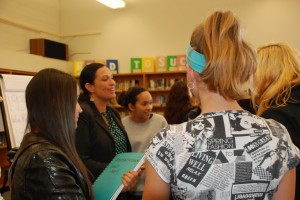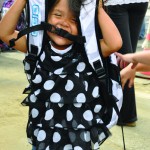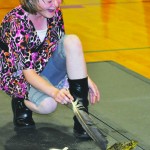
Article and photo by Jeannie Briones
TULALIP, Washington – Ever wonder what it’s like to be a hero for a day? Ask any Watch D.O.G.S. volunteer, like Paul Allen. On October 25th, Paul, wearing his official Watch D.O.G.S. shirt and badge, greeted students at Marysville Totem Middle School as they arrived, officially kicking off the volunteer program that promotes male role models in schools.
Watch D.O.G.S. (Dads of Great Students) is an innovative program created by the National Center for Fathering, which focuses on safety and education in schools by using the positive influence of fathers and father figures. On the day of their participation, Watch D.O.G.S. volunteers are given a short orientation with the school representative and are given a daily schedule of responsibilities.
“I think having a male role model is a positive influence that really helps the kids to see there are people who care about them,” said Paul. “I really want to make sure they are doing well in school and that the kids treat others with respect.”
Paul, a former Marysville Grove Elementary School, has witnessed a boost in morale and better behavior among the students, simply by having male role models on hand to bond with them.
Paul’s two daughters are used to their dad participating at school. His 7th grade daughter, Chloe, attends Marysville Totem Middle School, and likes when her dad volunteers for school activities.
“I glad that my dad helps kids that are struggling,” said Chloe Allen.
Paul spent his successful volunteer day assisting kids in the classroom, supervising during lunchtime, and monitoring kids for good behavior. Paul encourages other fathers to volunteer and to set a good example by being a role model, not only for their own kids, but for the entire student body.
Fathers, stepfathers, grandfathers, uncles and male father figures are asked to spend at least one day at their student’s school volunteering. They will support the school by monitoring the school property, working with kids one-on-one or in small groups, reading, helping with homework, helping with sports, or whatever needs to be done to plant seeds of success in the lives of the students.
For information on volunteering, contact Marysville Totem Middle School at 360.653.0610. Learn more information about the Watch D.O.G.S. program by visiting www.fathers.com/watchdogs.
Jeannie Briones: 360-716-4188; jbriones@tulaliptribes-nsn.gov
















